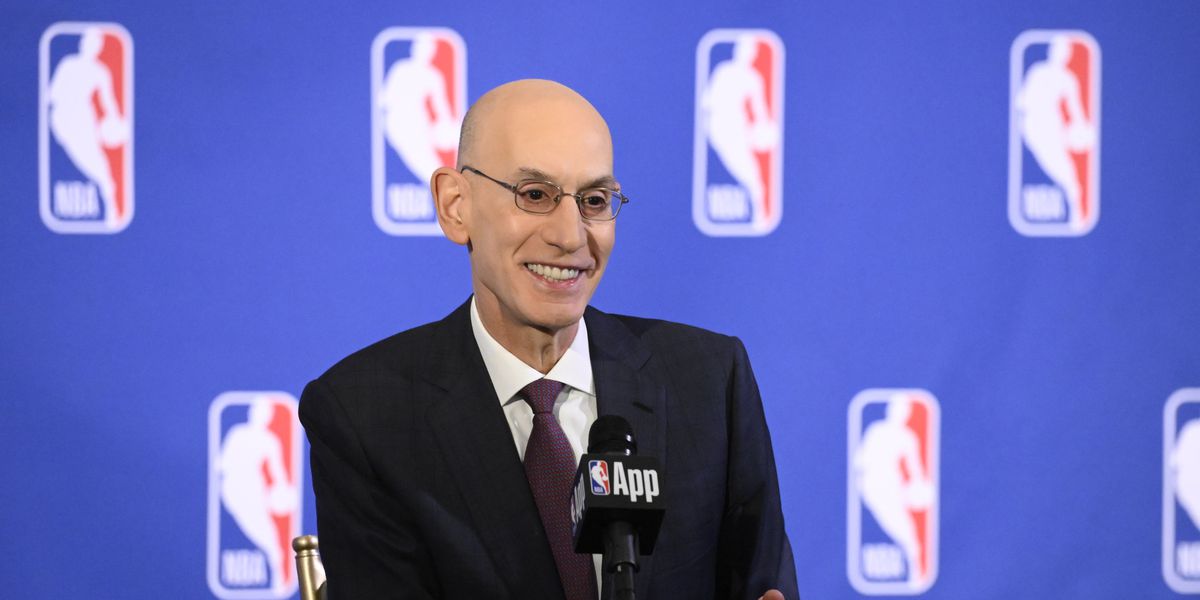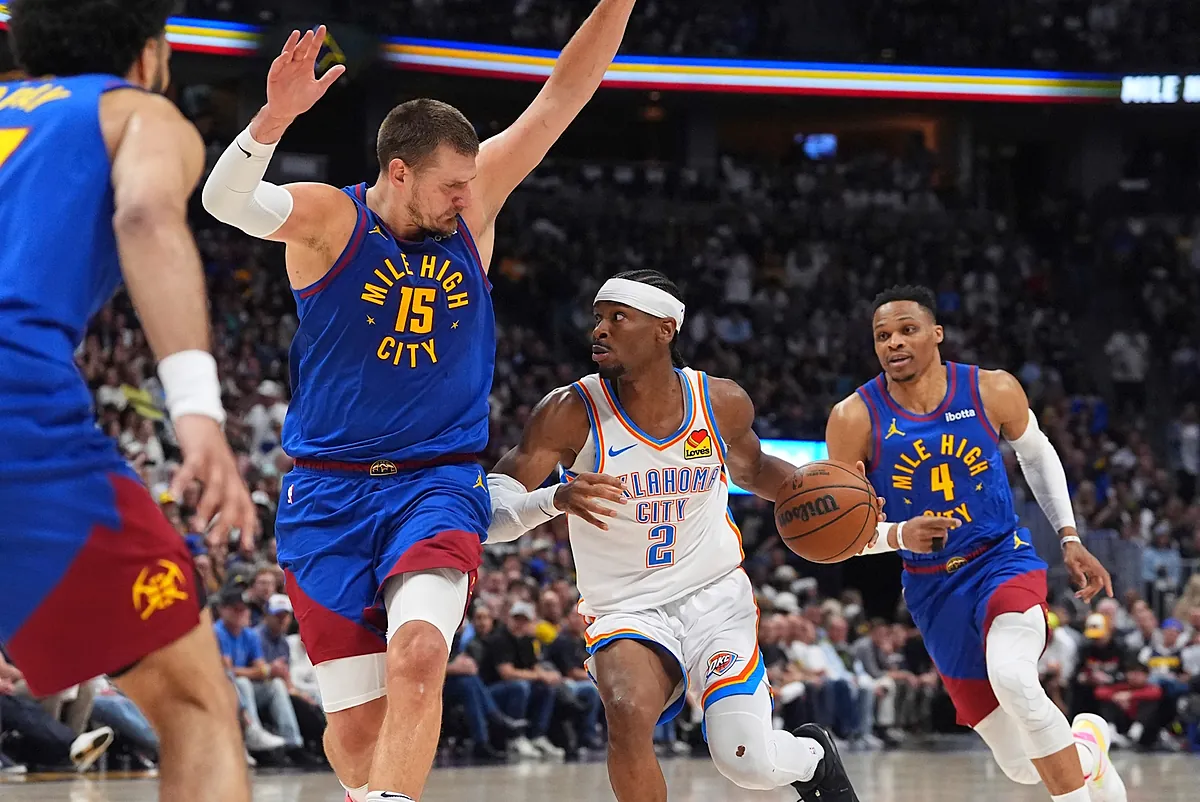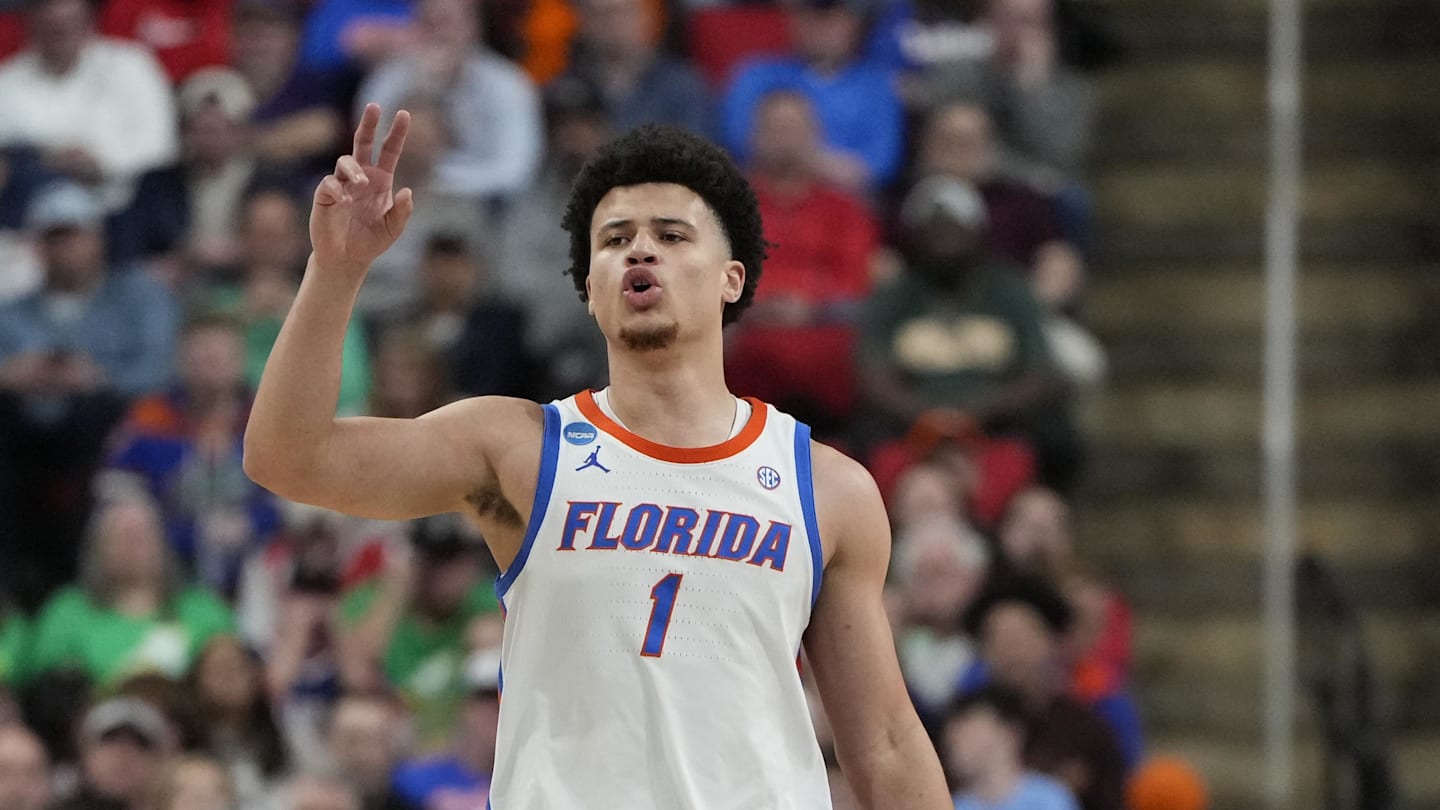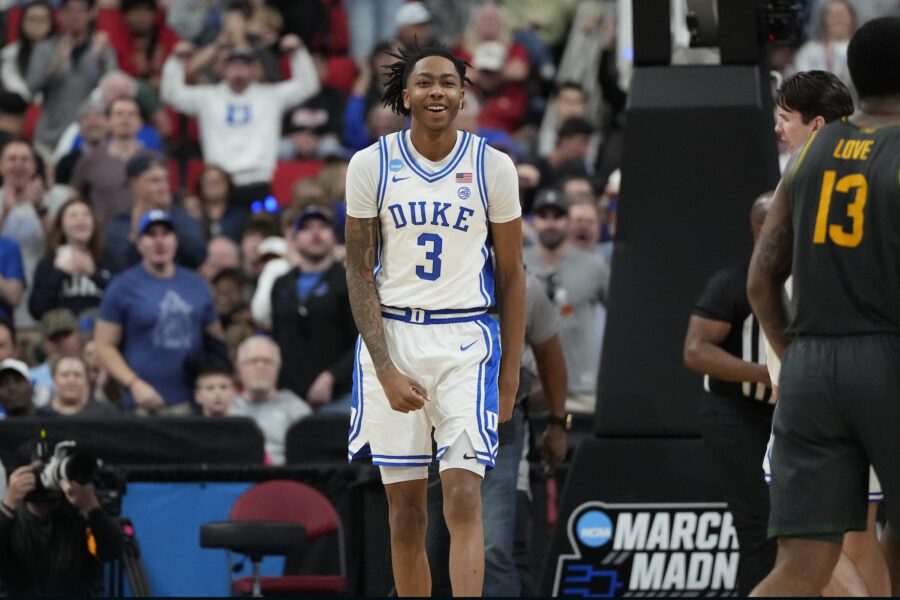
The results of the 2025 NBA Draft Lottery are in. In case you missed them, the Dallas Mavericks won the first overall pick and the presumptive rights to Duke forward Cooper Flagg. The San Antonio Spurs got the first consolation prize, while the Philadelphia 76ers earned the third spot. Of the three, only Philly was within shouting distance of their pick before the drawing. The Mavericks rose 10 spots to claim the crown, the Spurs 6 to land in the second position.
While the event generated the requisite excitement—redoubled in a year with a deep and star-laden draft class—it represents yet another cosmetic blemish on the face of the NBA. Every time the league tries to fix the process, it ends up being broken in a different manner.
Rewind back to the 1985 NBA Draft. Georgetown center Patrick Ewing was the prize that year. It was the first lottery drawing ever.
The system had been initiated to stop the practice of “tanking”, intentionally losing games in order to secure a better spot in the draft order. With the draft seeded in reverse order of record, without any randomness involved, the value of a loss for non-playoff teams started to exceed the value of victories. Finishing with the 27th best record in the league instead of the 28th brought no extra credit. Getting the third pick in the draft instead of the fourth could change the fortunes of a franchise.
This was particularly true in the new, and growing, David Stern era. The Commissioner took his seat at the head of the NBA table in 1984. He capitalized on a new wave of potential NBA superstars, led by Los Angeles Lakers guard Magic Johnson, Boston Celtics forward Larry Bird, and a youngster from the Chicago Bulls named Michael Jordan. Stern would oversee an era of unprecedented growth, largely by marketing individuals over franchises. Publicity, broadcast schedules, league rules and officiating…the focus of the brand became putting Magic, Bird, and above all Mike into the living room and consciousness of viewers.
In this new NBA, fielding a transcendent superstar became more important than ever before. This made the NBA Draft—especially the highest picks therein—correspondingly more important. The lottery became a countermeasure, a nod to the sport still being a sport. Teams couldn’t just sacrifice winning to put themselves at the head of the list for the next marketable star. Anti-tank warfare became part of the league’s lexicon for the first time.
The very first draft lottery became mired in controversy as the New York Knicks—underperforming while sitting on the largest population and the most marquee-ready name in the country—won the first-overall pick and Ewing. Viewers openly wondered if the fix was in. None of the other candidates would have benefitted the league as much with a win. Urban legend would later claim that the Knicks’ envelope had been stored in the freezer, making it instantly evident to Commissioner Stern when he reached in the bowl to pull out the lucky name.
That theory is unlikely. It may not have been necessary. In those days, only seven teams participated in the lottery. Odds were weighted equally: one team, one envelope in the bowl. The Knicks had an organic 1 in 7 chance of winning that spot. They got it.
The lottery continued more or less on course for the next couple seasons, albeit with a major rule change that only the first three picks would be randomly drawn. That assured the worst team in the league would pick no lower than fourth in the order.
Grumbling continued, however. The equal chances led to too many (perceived) imbalanced results. The problem of tanking had now been replaced with the problem of statistical oddities taking away draft help from teams most in need, threatening to create a semi-permanent class divide among NBA franchises: the lucky vs. the unlucky. Fans noticed the already-popular teams getting good results the same way chemistry geeks notice the football stars getting all the assembly awards, all the prom dates, and all the free tater tots at the drive-thru.
In 1990 the league began experimenting with a weighted lottery system to correct the issue. Since the number of non-playoffs teams now numbered 11, the worst of them would have 11 chances as the first pick, the second-worst 10 chances, and so on down the line.
That system held until 1993 when the world turned upside down. The Orlando Magic had already won the 1992 Draft, along with another generational center: Shaquille O’Neal. When the Magic’s lucky number also came up first in 1993, just one year later, everything exploded. The league immediately moved to weight the results further towards teams with bad records, ensuring a 25% chance for the worst-overall team to get the best pick, paring back the lowest lottery participants to almost no hope.
That system, adjusted for the ever-growing number of non-playoff teams in an expanding league, lasted for the better part of three decades. However, as the 2000’s began to age, a new chorus of griping began. Not surprisingly, this came with another set of on-court rule changes limiting physical contact allowed to defenders, in effect freeing high-scorers to operate unimpeded. Point totals, both individual and team, began to soar as offense became the order of the day. Since offense is perpetuated by stars and stars are generally drafted in high-pick slots, complaints about tanking rose again.
In response, the NBA re-weighted the lottery odds once more. Beginning in 2019, the bottom four teams in the league received an equal 14.0% chance of landing in the top spot, down from the 25-20-16% system that had held for years. Now, more than ever before, the effect of record was muted. There were no “best” overall odds, just a mish-mash of four bad teams with the same low chances. Under these new rules, the seventh-worst team in the drawing still had a 7.5% chance of winning it, over half of the most likely teams’ 14%. Tanking was vanquished once again.
Except it wasn’t. 8 of the 14 lottery participants this season won 3 or fewer of their last 10 games. Only 1 of 14 had a winning record in their last 10. Cries of tanking—either complaining about it or encouraging local teams to begin it-stretched as far back as January, only three months into the season. Indeed, preseason experts openly identified the 12 teams in the NBA Western Conference who were trying to make the playoffs this year and the 3 that weren’t. The Eastern Conference was a little more muddy, but the line still existed. Despite the lottery changes, tanking is still a live issue.
And then we get to the results of the 2025 Draft Lottery.
Admittedly these views are biased; this is a Portland Trail Blazers site. Portland didn’t get promoted this year. But it’s not all sour grapes. The Blazers stand with a handful of teams—the Utah Jazz, Charlotte Hornets, Washington Wizards—in need of a genuine talent infusion, watching everybody else leap to the top instead…again. And you couldn’t have hand-picked three more unlikeable teams to claim the prizes.
- The 76ers were the most “deserving” of the three, rising only two spots in the order after winning 24 games. But they reside in a major population market. Within the memories of most NBA fans, the Sixers gamed the lottery system, fielding horrid teams in their euphemistically-titled “process” to secure high picks in consecutive drafts. In 2014 they selected center Joel Embiid third overall. They took center Jahlil Okafor in the same spot in 2015. In 2016 they nabbed point guard Ben Simmons with the first overall pick, then won it all again in 2017, taking guard Markelle Fultz. Fultz and Okafor were busts. They had a public falling out with Simmons, whose career has been troubled. They’ve ridden Embiid into the ground. Their one brilliant pick came a year after all this, as they selected Mikal Bridges tenth overall. They promptly traded him to Phoenix. Good job, guys. But instead of going to the back of the line and thinking about what you’ve done, why not step up and do it all over again? Sorry, everyone else, you’ll have to wait. Philly needs a do-over.
- The San Antonio Spurs are the most charismatic of the three teams. They’re known for their culture and championship heritage. They’re over-credited for the latter. The Spurs are the NBA equivalent of In-N-Out Burger. Their culture and decision-making is better than most. Their front office is good enough to edge out Burger-King-level peers. But why are they talked about like Prime Rib instead of a slightly-improved version of the same bun and patty? 1987: the Spurs win the NBA Draft Lottery, taking generational center David Robinson. 1997: the Spurs win the NBA Draft Lottery, taking generational forward-center Tim Duncan. 2023: the Spurs win the NBA Draft Lottery, taking generational and galactic center Victor Wembanyama. They are without a doubt the most inexcusably-lucky lottery franchise ever. Even if you’re a fanatic Spurs backer, ask yourself where that vaunted culture (and all the rings) would be without those three lottery wins. And now, instead of raising a glass of vino to the teams who prospered this year and saying, “See you on the court with our OVERPOWERING GENERATIONAL TALENT WE ACCIDENTALLY BACKED INTO AGAIN!” the Spurs almost got Cooper Freaking Flagg but instead will have to make do with Ace Bailey or another strong star-in-waiting candidate in a super-stacked draft.
- The Dallas Mavericks spent decades under the billionaire who pioneered, “Just because I think it, it’s right,” and made sure that was made known in every media outlet from Texas to Timbuktu. They won a title a couple decades after shrewdly trading for Dirk Nowitzki in the 1998 NBA Draft when nobody else believed in him. In the interim they pillaged the league for free agent after free agent, taking advantage of the low Texas taxes and a high franchise profile. Their biggest claim to fame outside of that championship was trading Trae Young for Luka Doncic on draft night, 2018, a repeat of their Nowitzki strategy. Then they fumbled their relationship with Doncic (or vice versa) to the point that, one year after going to the NBA FINALS (caps intentional) they traded him to the most hated team in the universe for forward-center Anthony Davis. This was simultaneously one of the worst public-relations moves ever and a first-world problem, because who else has a Doncic to toss around for one of the 75 best players of all time? And who else in this year’s lottery outside of the Phoenix Suns has had the sustained profile—and sustained lack of success to back it up—in recent years that the Mavericks boast of? These guys were already on national TV. In their worst season imaginable they won 39 games. Their own fans booed them out of the building after the Doncic trade. They were terrible in all ways, yet still they were talked about every five seconds via national media outlets, Los Angeles Lakers-lite. And their reward for this Bungle-ocity of a season? Let’s fix your reputation instantly and make everything golden by handing you the aforementioned Cooper Freaking Flagg one season after you played for a championship. “Yes sir, we know you have fallen on hard times after investing in that Lima-Bean-based Cryptocurrency. But come in and sit at your accustomed table and eat our finest steak for free. Just ignore those bedraggled urchins outside the door with their noses pressed against the window. We know you’ll make good on the bill soon. In fact, let us put you in the commercial for this restaurant! Thank you for being such a valued customer over all these years.”
Has the NBA fixed tanking by all of these lottery adjustments? Not really. Is tanking the worst problem afflicting the league and the lottery right now? Not really.
Instead, this is about what it’s always been about. The NBA finds itself on a teeter-totter. When it weighs the lottery towards favoring the teams most in need of star power, tanking increases. When it weighs the lottery towards tanking prevention, the percentages will inevitably produce inequitable—sometimes even grotesque—results. Yes, I’m looking at you, San Antonio. I don’t want to hear a THING about how wonderful and professional your franchise is for the next… *calculating interval between David Robinson and today* 48 years. The only thing you ought to be shilling for is the Texas State Lottery. You’re the poster children for scratch-off glory.
Don’t think you’re any better, Dallas. Watching this is exactly like being a modest kid with a conscientious family seeing some messed-up bully from a family that makes headlines every week for their ridiculous antics get into the Ivy League School just because they’re rich and you’re not. Enjoy the exclusive secret club membership that comes with being born on third base.
Am I exaggerating? Probably. But hey, NBA, how does it feel, engendering this kind of impression from what’s supposed to be a leaguewide celebration of the next generation? And how will it feel for everybody watching Cooper Flagg in already-entitled Dallas or the next-best star in this draft in already-blessed San Antonio for the next fifteen years?
We already know that the league doesn’t give a flying crud about non-marquee franchises in free agency or the trade market. (Anybody recall those super-hot “LeBron James to Sacramento” rumors? Could the Lakers even trade him there if they wanted to?) Now we’ve weighted the lottery so there’s a decent chance that we can take the same approach with the NBA Draft.
Remember the original issue with the lottery when the odds were all equal, that it threatened to create a permanent underclass in the NBA? Turns out they haven’t solved it. They really need to. Tanking may be bad, but at least it’s merit-based and everybody has an equal chance. That’s more than you can say for what’s happening right now. Unless you live with one of the three or four that benefit from this kind of thing—or support the two who are golden all the time no matter what—this sucks.
Now excuse me, I’m gonna drop the mic before a Spurs fan can pick it up and tell us how smart and saintly their franchise is.



